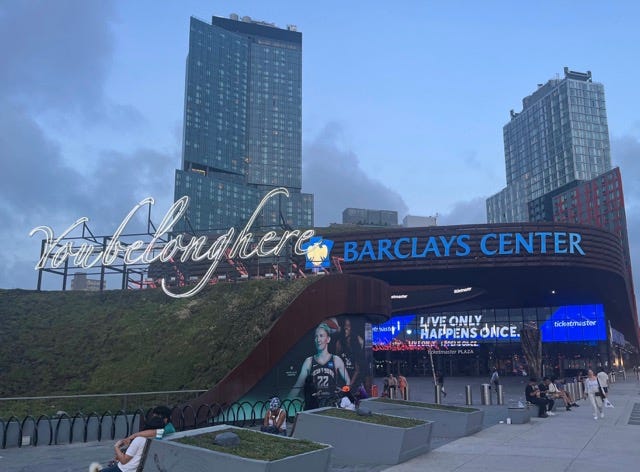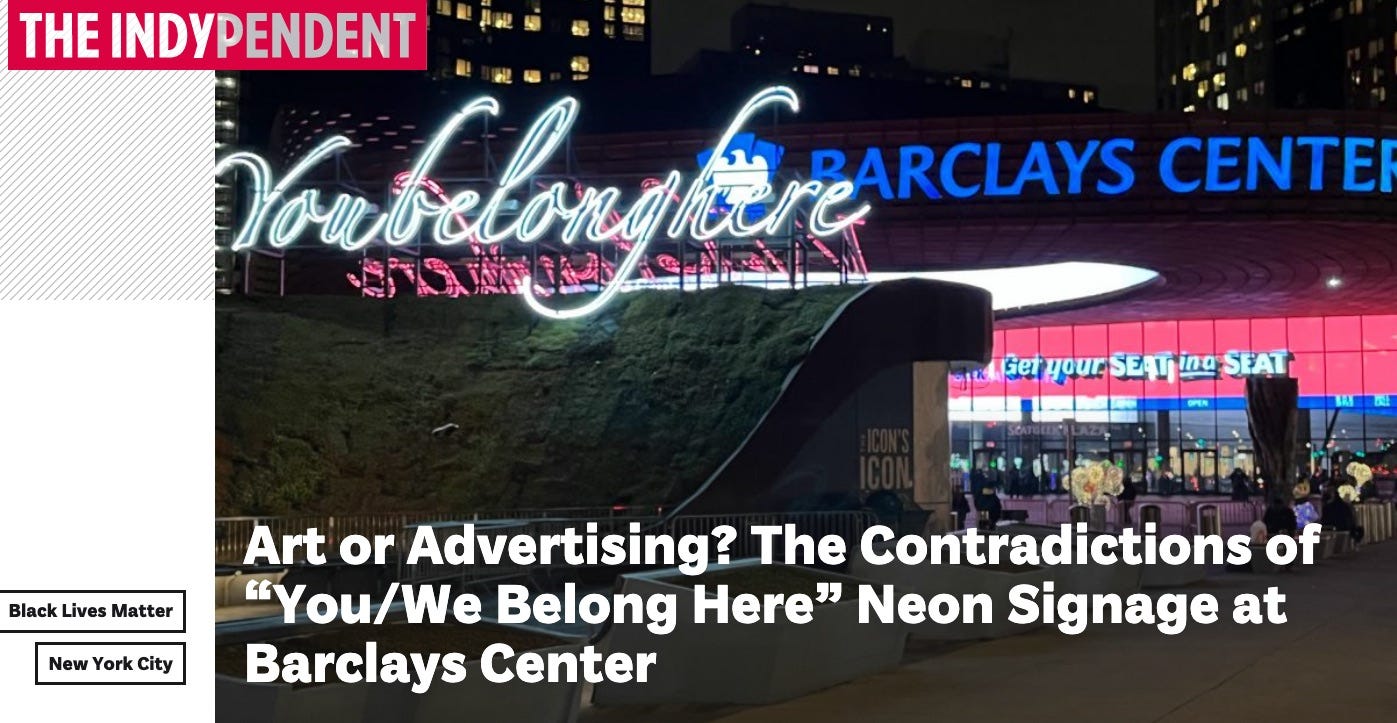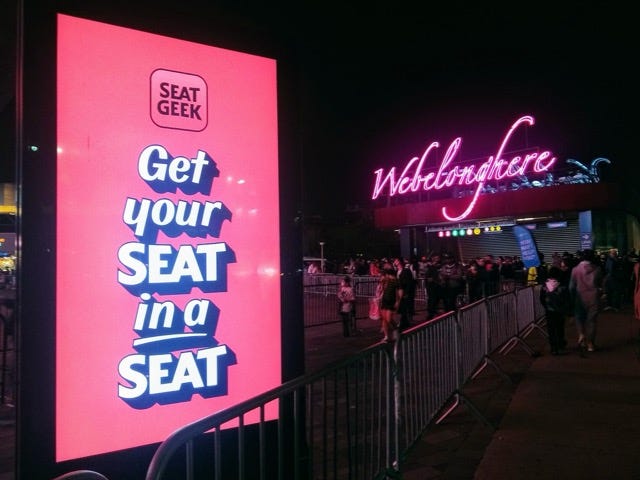Could NY State Leverage that Neon Art (or Advertising?) Installation to Get Tsai to Pay for the Plaza?
Empire State Development doesn't have to sign off on an automatic extension after three years, does it?
I’ve previously argued that New York State has more leverage than officials acknowledge to pressure arena company owner Joe Tsai to share some of his newfound riches, gained from an investment in holding company BSE Global by Julia Koch and family.
For one thing, Empire State Development (ESD), the state authority that oversees/shepherds the project, has essentially ceded the arena plaza to BSE Global. Still, it’s not obligated to make that permanent, at least not without a new agreement.
The art installation
That’s not the only leverage New York State has. Consider the “You Belong Here”/”We Belong Here” neon signage, by Tavares Strachan, installed over the plaza’s transit entrance in October 2021 for a three-year term, and facing an extension after the end of this year.
(Back then, it was SeatGeek Plaza, now it’s Ticketmaster Plaza.)
It was installed by the Joe and Clara Tsai Foundation’s Social Justice Fund at a site not permitted for advertising, with the permission of ESD.
The signage, to me, serves both as art and advertising, as I wrote for The Indypendent in December 2021, encouraging people to buy tickets for arena events.
An extension is apparently an internal decision by ESD, with no requirement for public notice or public input. The installation “should continue to adhere to the terms of the MGPP [Modified General Project Plan], Arena Lease, including all legal requirements and guidelines, Design Guidelines, and building permit requirements,” I was told.
But why should ESD grant an extension for an art/advertising project that was never publicly discussed before installation?
This, like so much with Atlantic Yards/Pacific Park, is ultimately a political decision.
Public property
As I wrote in October 2021, the Department of Buildings told me it was the property of the Metropolitan Transportation Authority (MTA), but the MTA told me it was the property of ESD, which leases the property—well, the arena site, not the plaza—to the Barclays Center operator.
I spotted a complication. Like the original Barclays Center sign on the arena roof, and the subsequent green roof, this falls through the cracks.
The transit entrance was never contemplated during public review--remember, the plaza was a "temporary" placeholder until the flagship office tower was built.
So the transit entrance was never assessed. Nor did ESD's Atlantic Yards Design Guidelines, which are supposed to govern signage on the arena block, address this structure.
Moreover, as I wrote, the decision to allow a temporary plaza was implicitly predicated on the common ownership—no longer valid—of the arena operator and the project’s master developer, originally Forest City Ratner.
Before building Barclays Center, which opened in 2012, the arena company was simply granted the plaza indefinitely, since it was coupled with the overall right to develop a giant office tower, aka B1, with an atrium, known as the Urban Room, effacing the plaza.
If Empire State Development agrees to move development rights from B1 across the street to what’s known as Site 5, that’s an implicit gift of the plaza to BSE Global.
“Belong Brooklyn”
The installation is part of an initiative known as “Belong Brooklyn," described by the Social Justice Fund as “a series of programs aimed at uniting communities across Brooklyn and beyond,” and could be seen as bolstering that brand.
“Belong Brooklyn” is a broad umbrella.
Those other programs include donations of $25,000 to four Brooklyn organizations for workforce readiness and re-entry employment services; matched donations, up to $25,000, “to four organizations dedicated to improving health outcomes for pregnant people of color in Brooklyn”; a Ticketmaster Plaza Summer Concert Series; a concert showcasing works of Steve Reich; and a #YouBelongHere social media campaign.

As stated on Twitter/X, “On July 16, alongside Clara Wu Tsai at Barclays Center, we recognized their crucial work before [New York] Liberty fans.” That’s brand reinforcement.
Still a message from 2020?
In a spoon-fed preview of the installation Oct. 13, 2021, Bloomberg’s CityLab suggested the new signage “might read like an expression of solidarity directed to the protesters who frequently gathered in Barclays Center plaza following the death of George Floyd in 2020” or “a pointed rebuke” to those who protested the arena and the larger Atlantic Yards project.
“Since its opening in 2012, the Barclays Center has gone from being the centerpiece in a community-wide debate about gentrification to a widely adopted public square for people fighting for social justice,” wrote Kriston Capps. “That makes Strachan’s artwork a site-specific installation for a site whose meaning has shifted powerfully over the last decade.”
Did anyone really believe that, in 2021? What about today?






